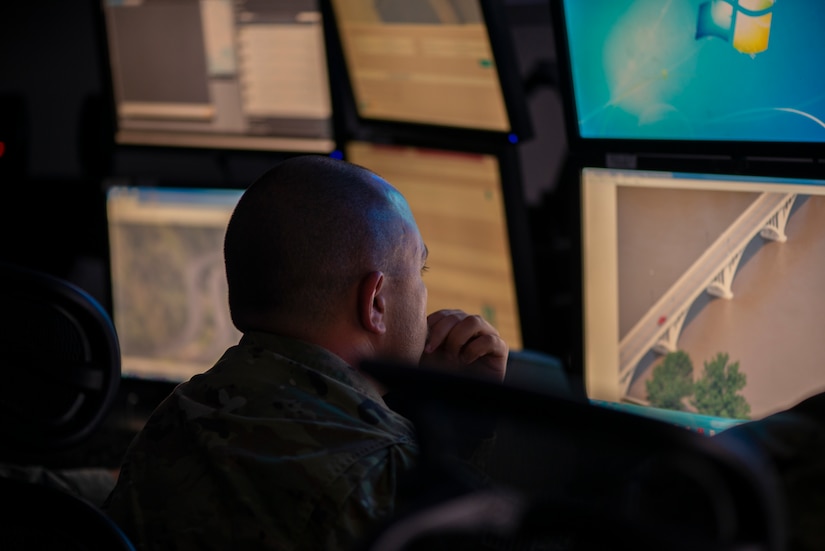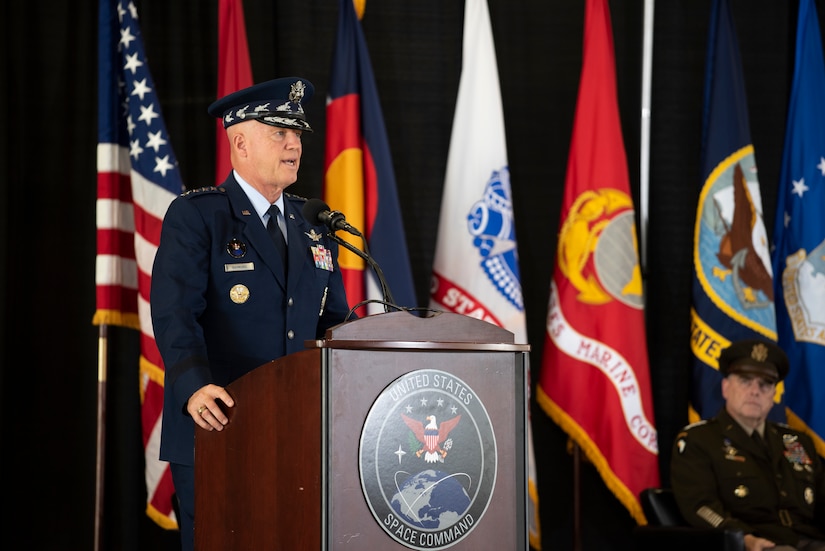Aug. 21, 2020
|
BY Navy Petty Officer 2nd Class Taylor M Dimartino
, USS Germantown
Sailors aboard the amphibious dock landing ship USS Germantown
received nasal swab tests to determine whether or not they had
contracted COVID-19, and within the week, all test results came back
negative.
Much of the ship's success at fighting the pandemic can be attributed
to its COVID-19 Rapid Response Team, or CRRT. Navy Petty Officer 2nd
Class Clint Woods leads the team as Germantown's preventive medicine
technician.
"I came up with the idea during our last underway period to start a
rapid response team on board," Woods said. "We were juggling a lot of
evolutions, and our relatively small medical team ensured that all
COVID-19 risks were being mitigated. We had to properly sanitize
everything."
In March, during the early phases of Navy COVID-19 policy
development, Woods realized it would take more than just the ship's
medical personnel to prevent COVID-19 from getting aboard the ship, he
said .
"It was all about being available to be at more than one place at a
time," Woods said. "I needed people I could train and trust to be an
asset in the fight against the coronavirus, people willing to push back
against the pandemic."
On April 6, Navy Cmdr. Christopher Causee, Germantown's commanding
officer, designated 15 sailors, representing each shipboard department,
to serve with the CRRT.
Woods said the Germantown's medical department spent more than a
month training CRRT members on everything from proper personal
protective equipment wear to disinfectant and quarantine procedures.
They are also trained to help with COVID-19 testing and are certified
under the Health and Insurance Portability and Accountability Act to
handle patient records the same way a hospital corpsman might, he added.
"Each CRRT member has stepped up in such a big way," Woods said.
"They have no problem dropping whatever they are doing for their regular
work and hopping into an evolution to support all of the medical team's
efforts. We made sure they were more capable than the average sailor of
identifying COVID-19 related risks and carrying out the proper
procedures when mitigating those risks."
Fighting COVID-19 on-ship, and keeping Germantown and our
embarked crews safe and ready to take on our mission, is important. We
are fortunate to have a team trained and ready."
Navy Lt. Kimberley Engols
It is now commonplace to see sailors wiping down surfaces around the
ship with disinfectant two to three times each day. In addition to
regular flight deck crews, members of the CRRT, equipped with handheld
sprayers, now stand ready at the flight line to disinfect incoming
supplies delivered by helicopter. Other members stand nearby,
disinfectant solution in hand, ready to spray each wrapped pallet as it
is brought off the flight deck.
"Our ship was underway when the COVID-19 pandemic started, and we had
to come up with a plan to remain free of the virus, keep our crew safe
and continue on with our mission," said Navy Lt. Kimberley Engols, the
Germantown's dental officer and appointed "COVID officer."
"Our first few planning meetings consisted of gathering the limited
available data of the virus and finding ways to adapt protocol to our
unique shipboard environment," Engols said. "Working in confined spaces
where distancing sailors is challenging, we realized how strict protocol
needed to be in order to prevent COVID-19 from entering our ship."
Engols added that Germantown's protocol is adapted from the Centers
for Disease Control and Prevention recommendations to meet Navy
operational requirements. It is continuously reviewed as new evidence
emerges about transmission and disinfection, she said.
While his team's actions have not always been convenient for the
Germantown's crew, Woods said, everyone understands the importance of
setting a new routine for life aboard a warship during the pandemic.
Woods said the CRRT is responsible for implementing strict social
distancing controls while underway by periodically shutting down the
gyms and ship's store, limiting the number of personnel eating on the
mess decks at any given time and maintaining a 6-foot distance between
sailors in the chow line. The team also ensures that masks are worn
properly by every member of the crew.
"Everyone on board recognizes how serious the virus has become,"
Woods said. "Even if these decisions are unpopular, they are necessary,
and I have the CRRT members to thank for all of their incredible work
enforcing these policies."
Engols said the CRRT has played a vital role in keeping Germantown's crew safe.
"The team continues to adapt to our mission and is ready to muster at
any time of day, as needed, in response to any potential threat
vectors," Engols said. "Fighting COVID-19 on-ship, and keeping
Germantown and our embarked crews safe and ready to take on our mission,
is important. We are fortunate to have a team trained and ready."
Woods said he agrees that the CRRT's goal is keeping everyone on the ship healthy.
"We haven't had a single case of COVID-19 on the ship, and I
recognize that as evidence of how effective our team has been," Woods
said. "If we can keep concern about coronavirus at the back of
everyone's mind and allow sailors to focus first on all the hard work
they are doing on a daily basis at sea, then I know we are on the right
track to beat this virus. My team's ability to adapt and overcome has
been phenomenal and has made all the difference in keeping our crew safe
from coronavirus."
The Germantown, part of America Expeditionary Strike Group, is
operating in the 7th Fleet area of operations to enhance
interoperability with allies and partners, and serves as a ready
response force to defend peace and stability in the Indo-Pacific region.



























